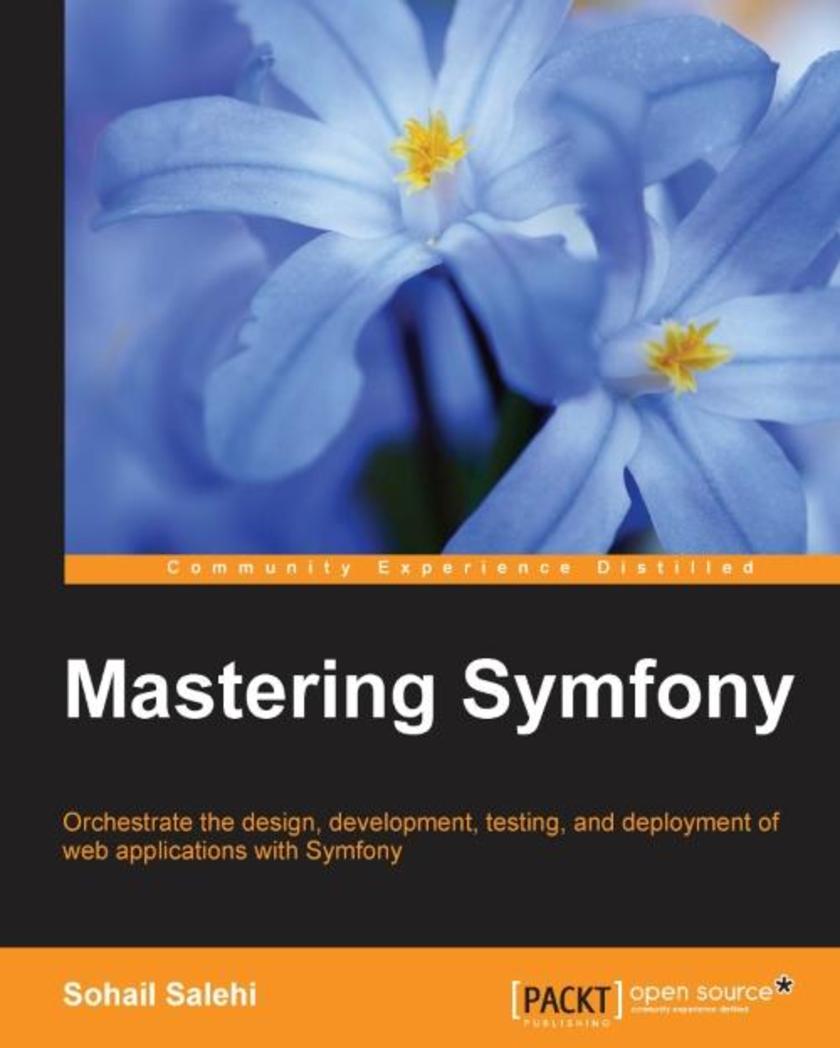
Mastering Symfony
¥71.93
Orchestrate the designing, development, testing, and deployment of web applications with Symfony About This Book Create a robust and reliable Symfony development pipeline using Amazon's cloud platform Cut development and maintenance costs by defining crystal clear features and possible scenarios for each feature before implementation Follow detailed examples provided in each chapter to create a task management application Who This Book Is For If you are a PHP developer with some experience in Symfony and are looking to master the framework and use it to its full potential, then this book is for you. Though experience with PHP, object-oriented techniques, and Symfony basics is assumed, this book will give you a crash course on the basics and then proceed to more advanced topics. What You Will Learn Install and configure Symfony and required third-party bundles to develop a task management application Set up a continuous integration server to orchestrate automatic builds every time you add a new feature to your project Reduce maintenance costs dramatically using Behaviour Driven Development (BDD) Create a slick user interface using the Bootstrap framework Design robust business logic using Doctrine Build a comprehensive dashboard and secure your project using the Sonata project Improve performance using Redis, Memcache, and Varnish Create customized Symfony commands and add them to your console In Detail In this book, you will learn some lesser known aspects of development with Symfony, and you will see how to use Symfony as a framework to create reliable and effective applications. You might have developed some impressive PHP libraries in other projects, but what is the point when your library is tied to one particular projectWith Symfony, you can turn your code into a service and reuse it in other projects. This book starts with Symfony concepts such as bundles, routing, twig, doctrine, and more, taking you through the request/response life cycle. You will then proceed to set up development, test, and deployment environments in AWS. Then you will create reliable projects using Behat and Mink, and design business logic, cover authentication, and authorization steps in a security checking process. You will be walked through concepts such as DependencyInjection, service containers, and services, and go through steps to create customized commands for Symfony's console. Finally, the book covers performance optimization and the use of Varnish and Memcached in our project, and you are treated with the creation of database agnostic bundles and best practices. Style and approach A step-by-step guide to mastering Symfony while developing a task management application. Each chapter comes with detailed examples.
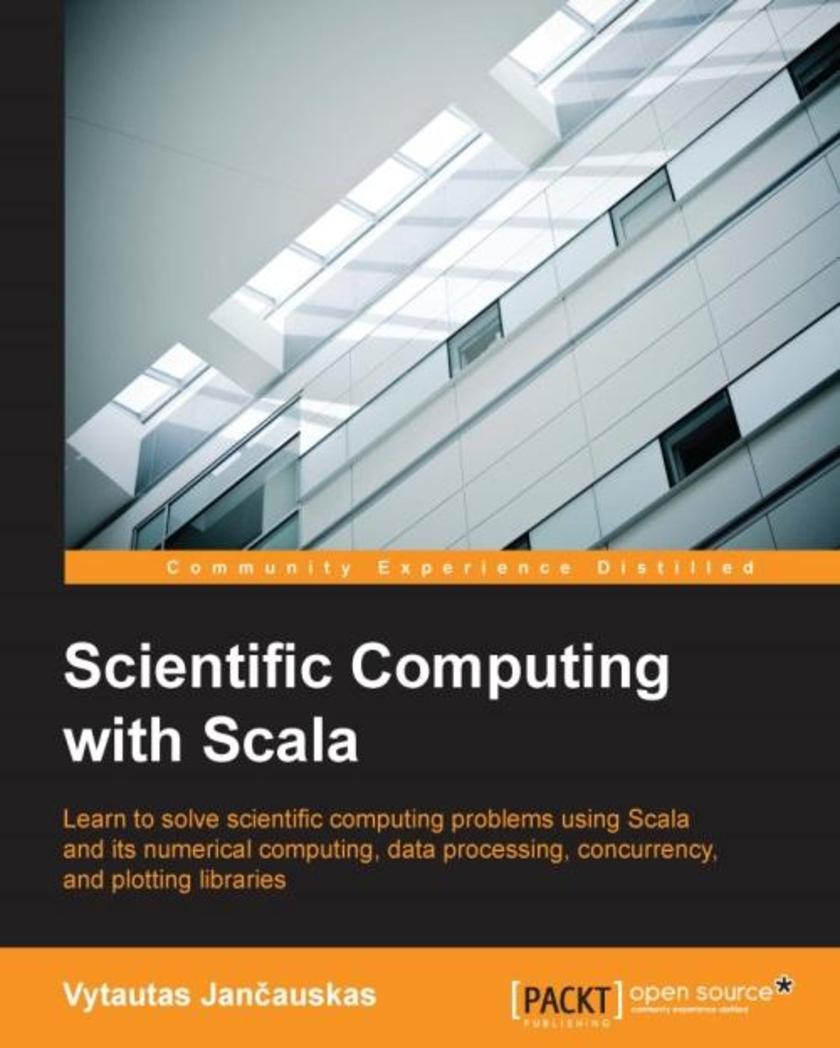
Scientific Computing with Scala
¥80.65
Learn to solve scientific computing problems using Scala and its numerical computing, data processing, concurrency, and plotting libraries About This Book Parallelize your numerical computing code using convenient and safe techniques. Accomplish common high-performance, scientific computing goals in Scala. Learn about data visualization and how to create high-quality scientific plots in Scala Who This Book Is For Scientists and engineers who would like to use Scala for their scientific and numerical computing needs. A basic familiarity with undergraduate level mathematics and statistics is expected but not strictly required. A basic knowledge of Scala is required as well as the ability to write simple Scala programs. However, complicated programming concepts are not used in the book. Anyone who wants to explore using Scala for writing scientific or engineering software will benefit from the book. What You Will Learn Write and read a variety of popular file formats used to store scientific data Use Breeze for linear algebra, optimization, and digital signal processing Gain insight into Saddle for data analysis Use ScalaLab for interactive computing Quickly and conveniently write safe parallel applications using Scala's parallel collections Implement and deploy concurrent programs using the Akka framework Use the Wisp plotting library to produce scientific plots Visualize multivariate data using various visualization techniques In Detail Scala is a statically typed, Java Virtual Machine (JVM)-based language with strong support for functional programming. There exist libraries for Scala that cover a range of common scientific computing tasks – from linear algebra and numerical algorithms to convenient and safe parallelization to powerful plotting facilities. Learning to use these to perform common scientific tasks will allow you to write programs that are both fast and easy to write and maintain. We will start by discussing the advantages of using Scala over other scientific computing platforms. You will discover Scala packages that provide the functionality you have come to expect when writing scientific software. We will explore using Scala's Breeze library for linear algebra, optimization, and signal processing. We will then proceed to the Saddle library for data analysis. If you have experience in R or with Python's popular pandas library you will learn how to translate those skills to Saddle. If you are new to data analysis, you will learn basic concepts of Saddle as well. Well will explore the numerical computing environment called ScalaLab. It comes bundled with a lot of scientific software readily available. We will use it for interactive computing, data analysis, and visualization. In the following chapters, we will explore using Scala's powerful parallel collections for safe and convenient parallel programming. Topics such as the Akka concurrency framework will be covered. Finally, you will learn about multivariate data visualization and how to produce professional-looking plots in Scala easily. After reading the book, you should have more than enough information on how to start using Scala as your scientific computing platform Style and approach Examples are provided on how to use Scala to do basic numerical and scientific computing tasks. All the concepts are illustrated with more involved examples in each chapter. The goal of the book is to allow you to translate existing experience in scientific computing to Scala.
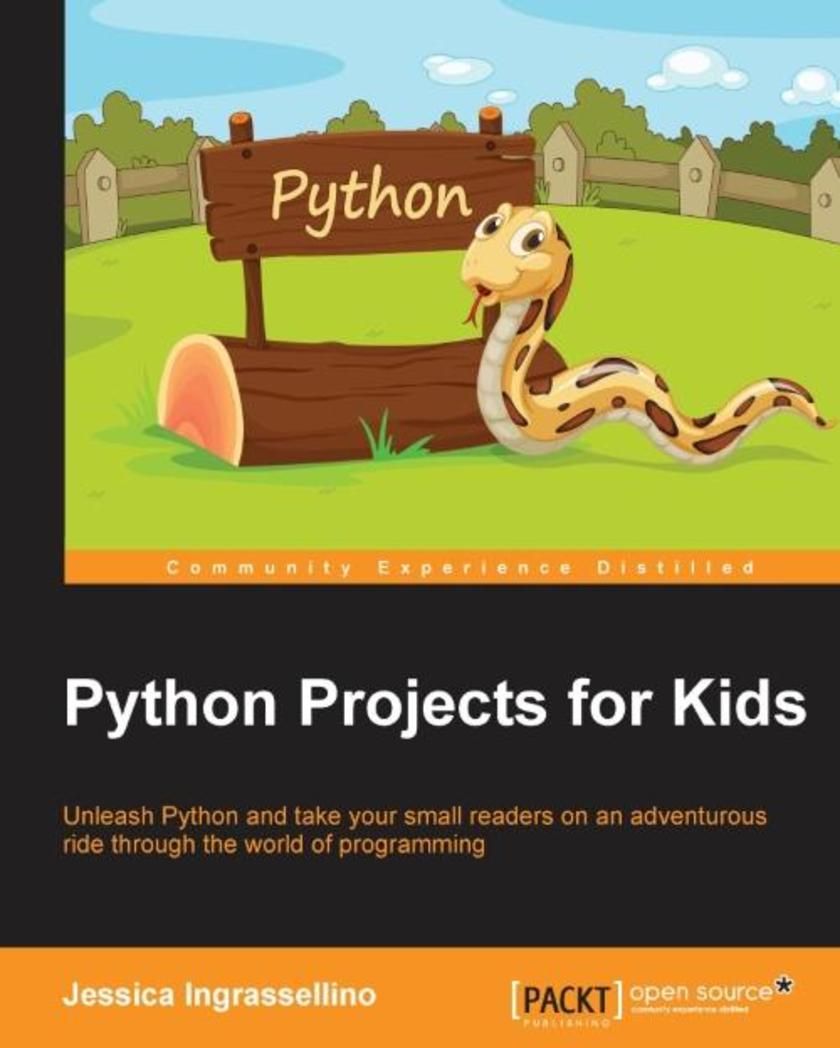
Python Projects for Kids
¥63.21
Unleash Python and take your small readers on an adventurous ride through the world of programming About This Book Learn to start using Python for some simple programming tasks such as doing easy mathematical calculations. Use logic and control loops to build a nice interesting game. Get to grips with working with data and, once you're comfortable with that, you'll be introduced to Pygame, which will help you wrap up the book with a cool game. Who This Book Is For This book is for kids (aged 10 and over). This is book is intended for absolute beginners who lack any knowledge of computing or programming languages and want to get started in the world of programming. What You Will Learn Start fiddling with Python's variables, build functions and interact with users Build your own calculator using the Math Library Train Python to make logical decisions Work with moving 2D objects on-screen Understand the Pygame Library and build your very own game! Write a cool program to manage inventories in your backpack In Detail Kids are always the most fast-paced and enthusiastic learners, and are naturally willing to build stuff that looks like magic at the end (when it works!). Programming can be one such magic. Being able to write a program that works helps them feel they've really achieved something. Kids today are very tech-savvy and cannot wait to enter the fast-paced digital world. Because Python is one of the most popular languages and has a syntax that is quite simple to understand, even kids are eager to use it as a stepping stone to learning programming languages. This book will cover projects that are simple and fun, and teach kids how to write Python code that works. The book will teach the basics of Python programming, installation, and so on and then will move on to projects. A total of three projects, with each and every step explained carefully, without any assumption of previous experience. Style and approach The book will take a light approach in guiding the little readers through the world of Python. The main idea is to teach by example and let the readers have as much exercises to do, so that they learn faster and can apply their own ideas to the existing examples. The book should get them thinking, by the end, on where they can go next with such a powerful tool at their disposal.
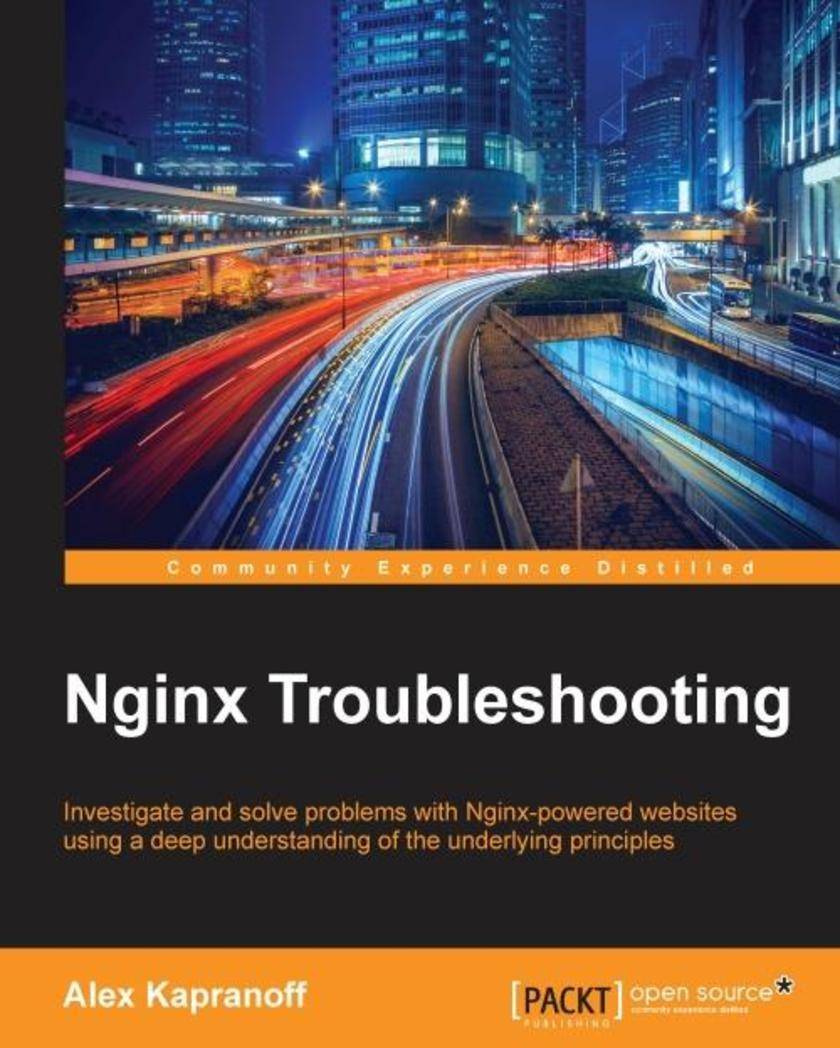
Nginx Troubleshooting
¥54.49
Investigate and solve problems with Nginx-powered websites using a deep understanding of the underlying principles About This Book Solve problems with your Nginx-powered websites before your audience notices anything Peek into the Nginx architecture and gain knowledge that will help you be valuable to you in the long run Gain knowledge of different types of problems in a step-by-step way Who This Book Is For The book is for technical specialists who already use Nginx to serve web pages for their users. Whether you are an experienced system administrator or a new professional, this book will help you do your job in the most efficient way. What You Will Learn Detect and investigate problems with your web servers Create correct and professional configuration files Get an in-depth understanding of the web server software Interpret Nginx log files easily and with actionable insights Make your websites respond as fast as possible Prevent problems by setting up proper monitoring and alerts In Detail Nginx is clearly winning the race to be the dominant software to power modern websites. It is fast and open source, maintained with passion by a brilliant team. This book will help you maintain your Nginx instances in a healthy and predictable state. It will lead you through all the types of problems you might encounter as a web administrator, with a special focus on performance and migration from older software. You will learn how to write good configuration files and will get good insights into Nginx logs. It will provide you solutions to problems such as missing or broken functionality and also show you how to tackle performance issues with the Nginx server. A special chapter is devoted to the art of prevention, that is, monitoring and alerting services you may use to detect problems before they manifest themselves on a big scale. The books ends with a reference to error and warning messages Nginx could emit to help you during incident investigations. Style and approach This comprehensive tutorial on Nginx troubleshooting takes an practical approach to guiding you through common issues in Nginx server.

Mastering QlikView Data Visualization
¥90.46
Take your QlikView skills to the next level and master the art of creating visual data analysis for real business needs About This Book Explore how to create your own QlikView data laboratory and how to develop QlikView applications using agile project methods Implement advanced data visualization and analysis for common business requirements from the sales, finance, marketing, inventory, operations, and human resources departments Learn from real-life experience shared in this book that will give you the upper hand in your next QlikView project Who This Book Is For This book is intended for developers who want to go beyond their technical knowledge of QlikView and understand how to create analysis and data visualizations that solve real business needs. You should have a basic understanding of advanced QlikView functions. What You Will Learn Apply advanced QlikView techniques such as set analysis and nested aggregation in order to deliver common business requirements Understand real business requirements for sales, finance, marketing, and human resources departments Discover when to apply more advanced data visualization such as frequency polygons, bullet graphs, and XmR charts Go beyond native QlikView and include geographical analysis, planning, and sentiment analysis in your QlikView application Troubleshoot common errors we discover at the moment we visualize data in QlikView Develop a plan to master Qlik Sense data visualization In Detail Just because you know how to swing a hammer doesn't mean you know how to build a house. Now that you've learned how to use QlikView, it's time to learn how to develop meaningful QlikView applications that deliver what your business users need. You will explore the requirements and the data from several business departments in order to deliver the most amazing analysis and data visualizations. In doing so, you will practice using advanced QlikView functions, chart object property options, and extensions to solve real-world challenges. Style and approach This hands-on guide follows the story of a company implementing QlikView as its enterprise data discovery solution. Each chapter starts with an understanding of the business requirements and the data model, and then helps you create insightful analysis and data visualizations. Each chapter expands on what was done in the previous chapter as we follow this continuously improving iterative process.

Distributed Computing with Python
¥63.21
Harness the power of multiple computers using Python through this fast-paced informative guide About This Book You'll learn to write data processing programs in Python that are highly available, reliable, and fault tolerant Make use of Amazon Web Services along with Python to establish a powerful remote computation system Train Python to handle data-intensive and resource hungry applications Who This Book Is For This book is for Python developers who have developed Python programs for data processing and now want to learn how to write fast, efficient programs that perform CPU-intensive data processing tasks. What You Will Learn Get an introduction to parallel and distributed computing See synchronous and asynchronous programming Explore parallelism in Python Distributed application with Celery Python in the Cloud Python on an HPC cluster Test and debug distributed applications In Detail CPU-intensive data processing tasks have become crucial considering the complexity of the various big data applications that are used today. Reducing the CPU utilization per process is very important to improve the overall speed of applications. This book will teach you how to perform parallel execution of computations by distributing them across multiple processors in a single machine, thus improving the overall performance of a big data processing task. We will cover synchronous and asynchronous models, shared memory and file systems, communication between various processes, synchronization, and more. Style and Approach This example based, step-by-step guide will show you how to make the best of your hardware configuration using Python for distributing applications.
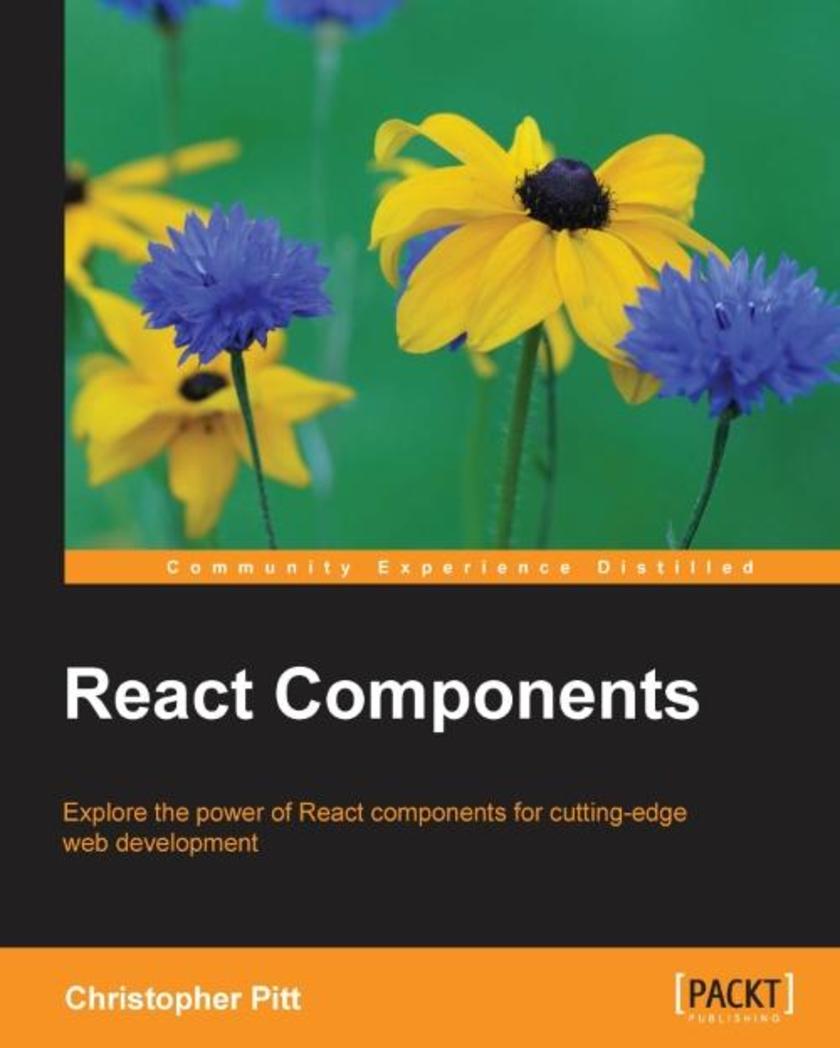
React Components
¥63.21
Explore the power of React components for cutting-edge web development About This Book Learn to build better websites by creating a variety of different components in React Conceptualize the design and build maintainable web apps with the help of components A fast-paced guide to help you learn about component-based development in React Who This Book Is For This book is ideal for developers who are familiar with the basics of React and are looking for a guide to building a wide range of components as well as develop component-driven UIs. What You Will Learn How to structure an app into components Working with nested components Work with nested components Set up communication across components Style the existing components Work with Material Design as a component Render components on the server Make the best of design patterns Make the app pluggable In Detail The reader will learn how to use React and its component-based architecture in order to develop modern user interfaces. A new holistic way of thinking about UI development will establish throughout this book and the reader will discover the power of React components with many examples. After reading the book and following the example application, the reader has built a small to a mid-size application with React using a component based UI architecture. The book will take the reader through a journey to discover the benefits of component-based user interfaces over the classical MVC architecture. Throughout the book, the reader will develop a wide range of components and then bring them together to build a component-based UI. By the end of this book, readers would have learned several techniques to build powerful components and how the component-based development is beneficial over regular web development. Style and approach This book is a compact, example-driven guide that provides a step-by-step approach.
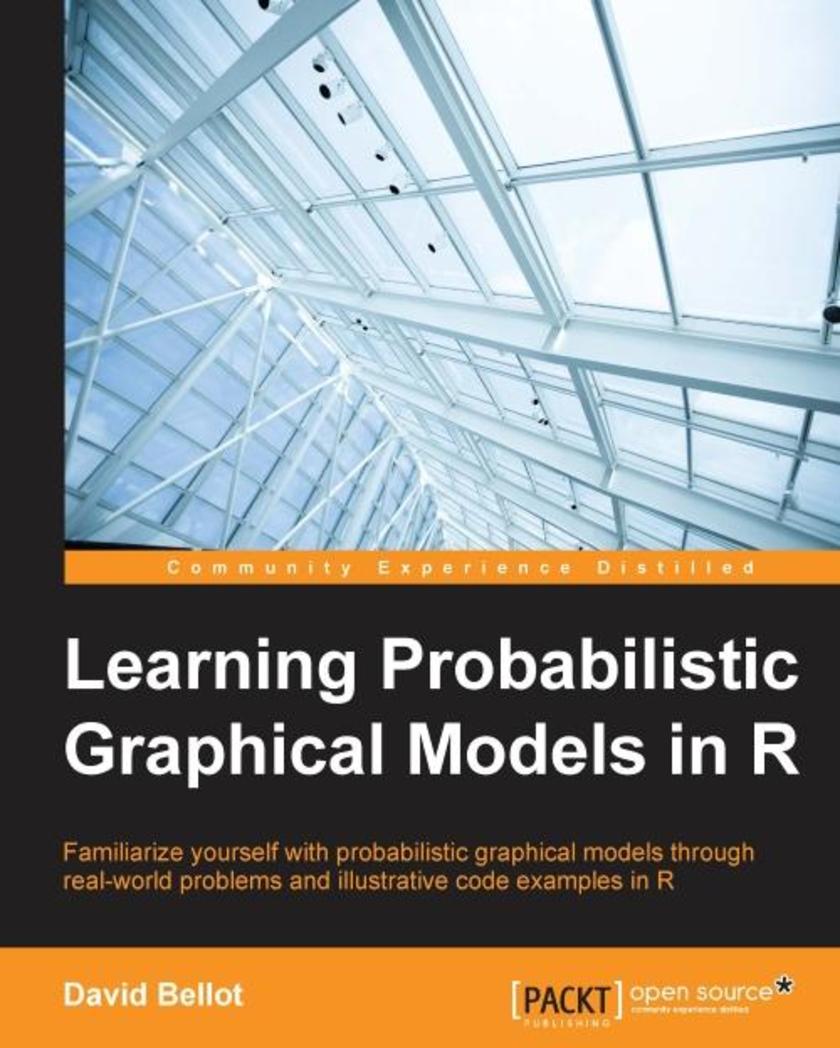
Learning Probabilistic Graphical Models in R
¥63.21
Familiarize yourself with probabilistic graphical models through real-world problems and illustrative code examples in R About This Book Predict and use a probabilistic graphical models (PGM) as an expert system Comprehend how your computer can learn Bayesian modeling to solve real-world problems Know how to prepare data and feed the models by using the appropriate algorithms from the appropriate R package Who This Book Is For This book is for anyone who has to deal with lots of data and draw conclusions from it, especially when the data is noisy or uncertain. Data scientists, machine learning enthusiasts, engineers, and those who curious about the latest advances in machine learning will find PGM interesting. What You Will Learn Understand the concepts of PGM and which type of PGM to use for which problem Tune the model’s parameters and explore new models automatically Understand the basic principles of Bayesian models, from simple to advanced Transform the old linear regression model into a powerful probabilistic model Use standard industry models but with the power of PGM Understand the advanced models used throughout today's industry See how to compute posterior distribution with exact and approximate inference algorithms In Detail Probabilistic graphical models (PGM, also known as graphical models) are a marriage between probability theory and graph theory. Generally, PGMs use a graph-based representation. Two branches of graphical representations of distributions are commonly used, namely Bayesian networks and Markov networks. R has many packages to implement graphical models. We’ll start by showing you how to transform a classical statistical model into a modern PGM and then look at how to do exact inference in graphical models. Proceeding, we’ll introduce you to many modern R packages that will help you to perform inference on the models. We will then run a Bayesian linear regression and you’ll see the advantage of going probabilistic when you want to do prediction. Next, you’ll master using R packages and implementing its techniques. Finally, you’ll be presented with machine learning applications that have a direct impact in many fields. Here, we’ll cover clustering and the discovery of hidden information in big data, as well as two important methods, PCA and ICA, to reduce the size of big problems. Style and approach This book gives you a detailed and step-by-step explanation of each mathematical concept, which will help you build and analyze your own machine learning models and apply them to real-world problems. The mathematics is kept simple and each formula is explained thoroughly.

Perl 6 Deep Dive
¥80.65
Learn Perl 6 effortlessly to solve everyday problems About This Book ? Filled with practical examples, this comprehensive guide explores all aspects of Perl 6. ? Leverage the power of Perl 6 concurrency to develop responsive and high-performant software. ? Delves into various programming paradigms (such as Object Oriented, functional, and reactive) that can be adopted by Perl 6 developers to write effective code. Who This Book Is For This book is for developers who would like to learn the Perl programming language. A basic knowledge of programming is assumed. What You Will Learn ? Learn the background from which Perl 6 appeared and how it developed. ? How to use Rakudo to run your programs. ? Various Perl 6 built-in types and details about their behavior ? Understand how scalar variables, hash variables, and arrays work ? Create meta operators and hyper operators ? How classes work and how to build software based on the Object Oriented Paradigm ? How Perl 6 provides support for concurrency, functional programming, and reactive programming. In Detail Perl is a family of high-level, general-purpose, interpreted, dynamic programming languages consisting of Perl 5 and Perl 6. Perl 6 helps developers write concise and declarative code that is easy to maintain. This book is an end-to-end guide that will help non-Perl developers get to grips with the language and use it to solve real-world problems. Beginning with a brief introduction to Perl 6, the first module in the book will teach you how to write and execute basic programs. The second module delves into language constructs, where you will learn about the built-in data types, variables, operators, modules, subroutines, and so on available in Perl 6. Here the book also delves deeply into data manipulation (for example, strings and text files) and you will learn how to create safe and correct Perl 6 modules. You will learn to create software in Perl by following the Object Oriented Paradigm. The final module explains in detail the incredible concurrency support provided by Perl 6. Here you will also learn about regexes, functional programming, and reactive programming in Perl 6. By the end of the book, with the help of a number of examples that you can follow and immediately run, modify, and use in practice, you will be fully conversant with the benefits of Perl 6. Style and approach This book will take you through essential Perl 6 concepts so you can implement them immediately
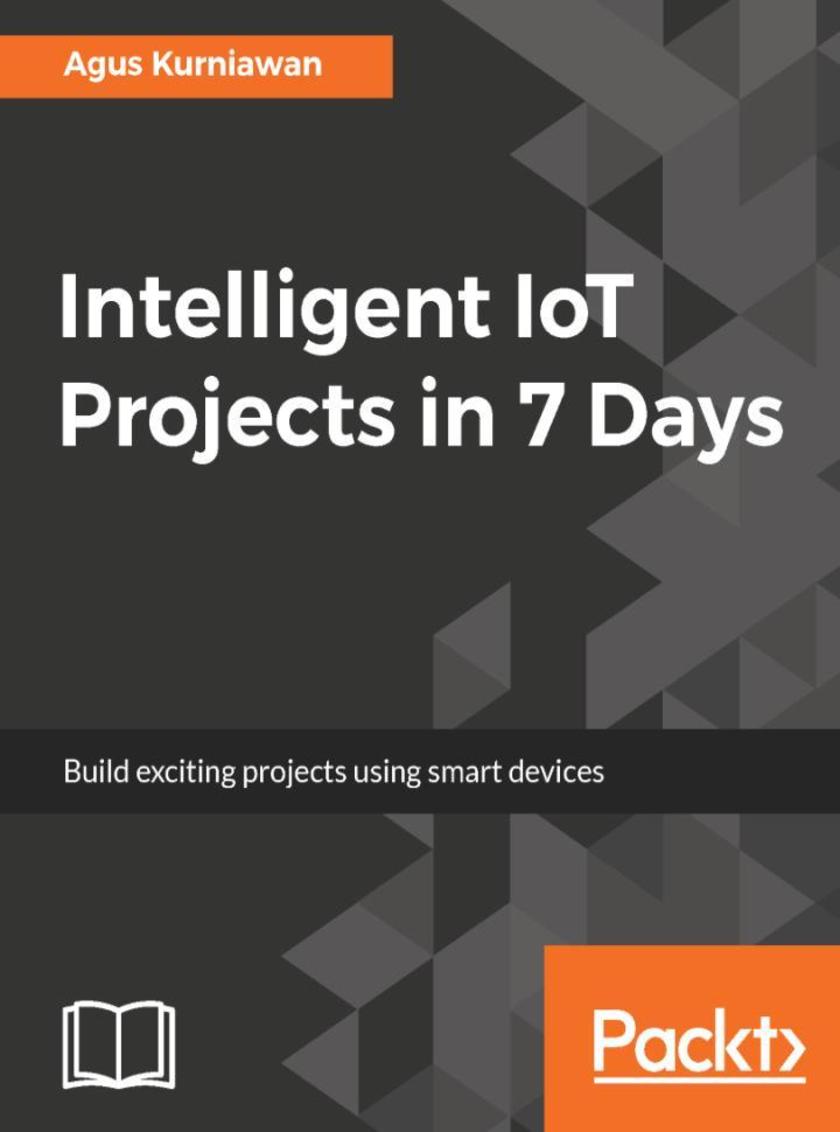
Intelligent IoT Projects in 7 Days
¥71.93
Discover how to build your own Intelligent Internet of Things projects and bring a new degree of interconnectivity to your world. About This Book ? Build intelligent and unusual IoT projects in just 7 days, ? Create home automation, smart home, and robotic projects and allow your devices to do smart work ? Build IoT skills through enticing projects and leverage revolutionary computing hardware through the RPi and Arduino. Who This Book Is For If you're a developer, IoT enthusiast, or just someone curious about Internet of Things, then this book is for you. A basic understanding of electronic hardware, networking, and basic programming skills would do wonders. What You Will Learn ? Learn how to get started with intelligent IoT projects ? Explore various pattern recognition and machine learning algorithms to make IoT projects smarter. ? Make decisions on which devices to use based on the kind of project to build. ? Create a simple machine learning application and implement decision system concepts ? Build a smart parking system using Arduino and Raspberry Pi ? Learn how to work with Amazon Echo and to build your own smart speaker machine ? Build multi-robot cooperation using swarm intelligence. In Detail Intelligent IoT Projects in 7 days is about creating smart IoT projects in just 7 days. This book will help you to overcome the challenge of analyzing data from physical devices. This book aims to help you put together some of the most exciting IoT projects in a short span of time. You'll be able to use these in achieving or automating everyday tasks—one project per day. We will start with a simple smart gardening system and move on to a smart parking system, and then we will make our own vending machine, a smart digital advertising dashboard, a smart speaker machine, an autonomous fire fighter robot, and finally look at a multi-robot cooperation using swarm intelligence Style and approach A clear step-by-step instruction guide to completing fully-fledged projects in just 7 days
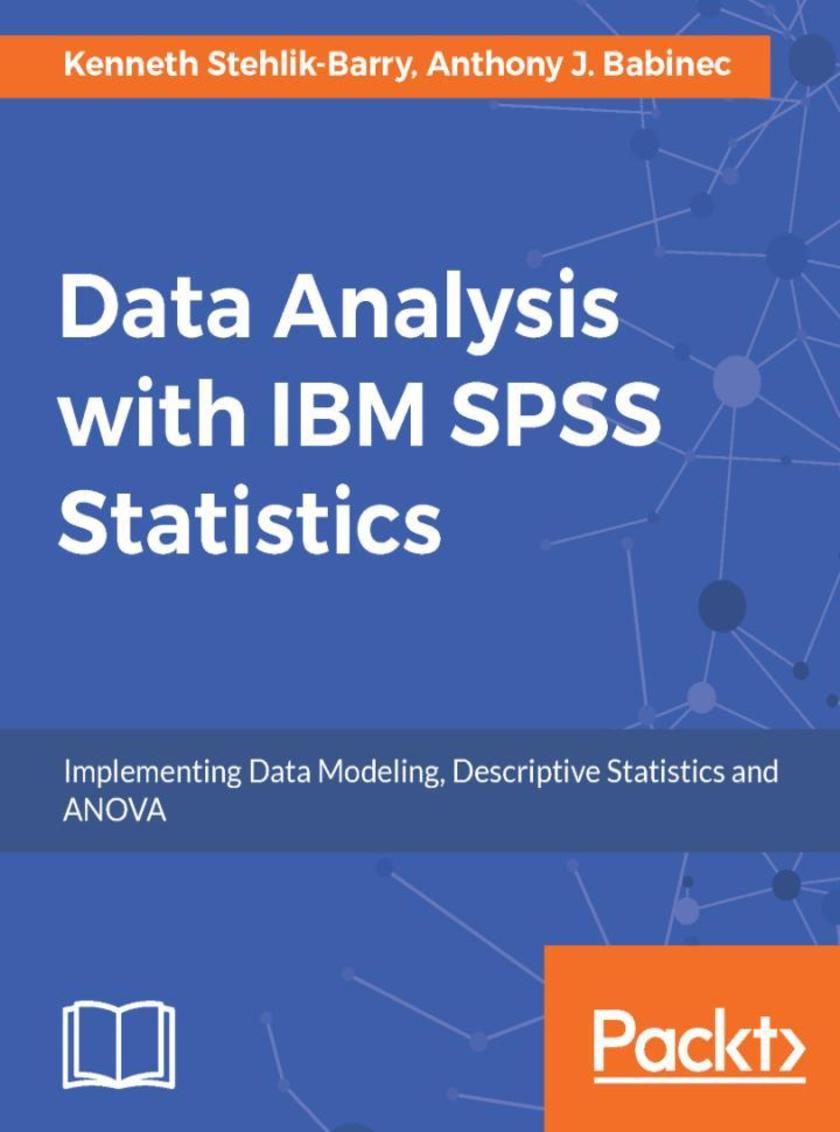
Data Analysis with IBM SPSS Statistics
¥107.90
Master data management & analysis techniques with IBM SPSS Statistics 24 About This Book ? Leverage the power of IBM SPSS Statistics to perform efficient statistical analysis of your data ? Choose the right statistical technique to analyze different types of data and build efficient models from your data with ease ? Overcome any hurdle that you might come across while learning the different SPSS Statistics concepts with clear instructions, tips and tricks Who This Book Is For This book is designed for analysts and researchers who need to work with data to discover meaningful patterns but do not have the time (or inclination) to become programmers. We assume a foundational understanding of statistics such as one would learn in a basic course or two on statistical techniques and methods. What You Will Learn ? Install and set up SPSS to create a working environment for analytics ? Techniques for exploring data visually and statistically, assessing data quality and addressing issues related to missing data ? How to import different kinds of data and work with it ? Organize data for analytical purposes (create new data elements, sampling, weighting, subsetting, and restructure your data) ? Discover basic relationships among data elements (bivariate data patterns, differences in means, correlations) ? Explore multivariate relationships ? Leverage the offerings to draw accurate insights from your research, and benefit your decision-making In Detail SPSS Statistics is a software package used for logical batched and non-batched statistical analysis. Analytical tools such as SPSS can readily provide even a novice user with an overwhelming amount of information and a broad range of options for analyzing patterns in the data. The journey starts with installing and configuring SPSS Statistics for first use and exploring the data to understand its potential (as well as its limitations). Use the right statistical analysis technique such as regression, classification and more, and analyze your data in the best possible manner. Work with graphs and charts to visualize your findings. With this information in hand, the discovery of patterns within the data can be undertaken. Finally, the high level objective of developing predictive models that can be applied to other situations will be addressed. By the end of this book, you will have a firm understanding of the various statistical analysis techniques offered by SPSS Statistics, and be able to master its use for data analysis with ease. Style and approach Provides a practical orientation to understanding a set of data and examining the key relationships among the data elements. Shows useful visualizations to enhance understanding and interpretation. Outlines a roadmap that focuses the process so decision regarding how to proceed can be made easily.
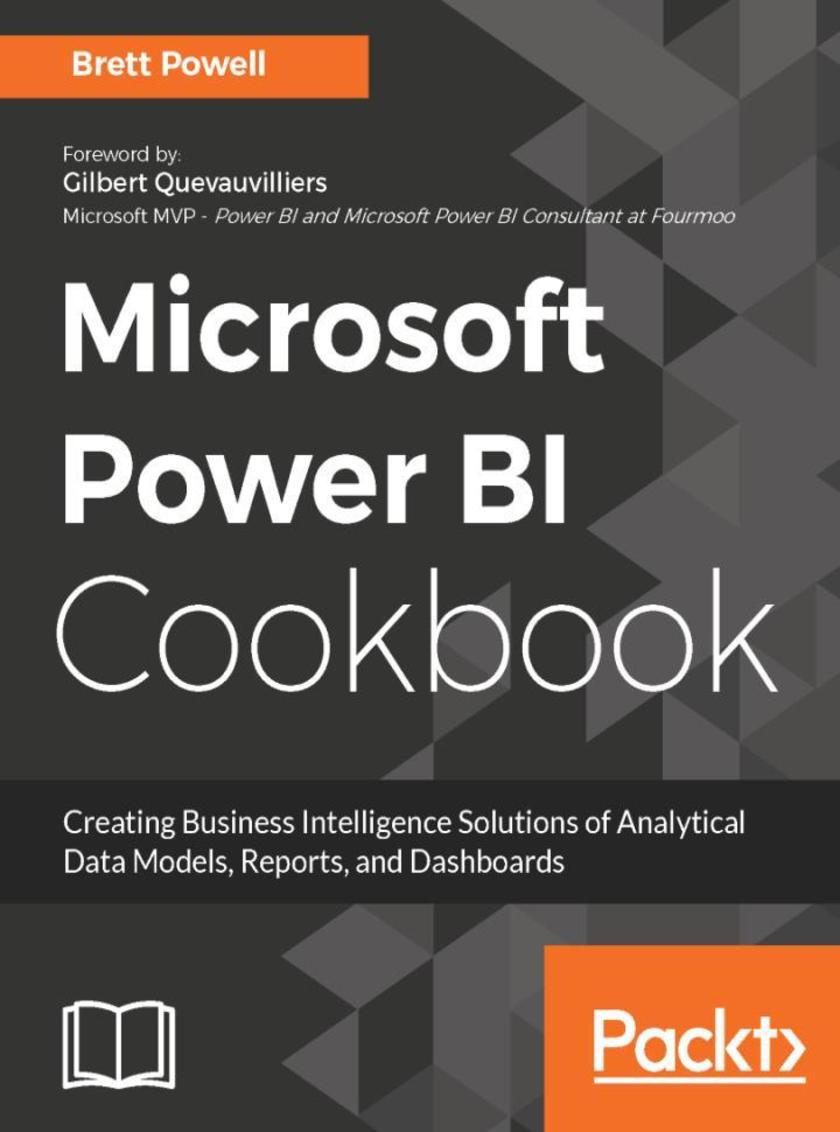
Microsoft Power BI Cookbook
¥107.90
Get more out of Microsoft Power BI turning your data into actionable insights About This Book ? From connecting to your data sources to developing and deploying immersive, mobile-ready dashboards and visualizations, this book covers it all ? Over 90 hands-on, technical recipes, tips, and use cases from across the Power BI platform including the Power BI Service and Mobile Applications ? Proven development techniques and guidance for implementing custom solutions with DAX and M languages Who This Book Is For This book is for BI professionals who wish to enhance their knowledge of Power BI beyond and to enhance the value of the Power BI solutions they deliver to business users. Those who are looking at quick solutions to common problems while using Power BI will also find this book to be a very useful resource .Some experience with Power BI will be useful. What You Will Learn ? Cleanse, stage, and integrate your data sources with Power BI ? Abstract data complexities and provide users with intuitive, self-service BI capabilities ? Build business logic and analysis into your solutions via the DAX programming language and dynamic, dashboard-ready calculations ? Take advantage of the analytics and predictive capabilities of Power BI ? Make your solutions more dynamic and user specific and/or defined including use cases of parameters, functions, and row level security ? Understand the differences and implications of DirectQuery, Live Connections, and Import-Mode Power BI datasets and how to deploy content to the Power BI Service and schedule refreshes ? Integrate other Microsoft data tools such as Excel and SQL Server Reporting Services into your Power BI solution In Detail Microsoft Power BI is a business intelligence and analytics platform consisting of applications and services designed to provide coherent, visual and interactive insights of data. This book will provide thorough, technical examples of using all primary Power BI tools and features as well as demonstrate high impact end-to-end solutions that leverage and integrate these technologies and services. Get familiar with Power BI development tools and services, go deep into the data connectivity and transformation, modeling, visualization and analytical capabilities of Power BI, and see Power BI’s functional programming languages of DAX and M come alive to deliver powerful solutions to address common, challenging scenarios in business intelligence. This book will excite and empower you to get more out of Power BI via detailed recipes, advanced design and development tips, and guidance on enhancing existing Power BI projects. Style and approach This book consists of practical recipes on Power BI that target novices as well as intermediate Power BI users. It goes deep into the technical issues, covers additional protocols, and many more real-live examples.

Swift 4 Programming Cookbook
¥80.65
Over 50 recipes to help you quickly and efficiently build applications with Swift 4 and Xcode 9 About This Book ? Write robust and efficient code and avoid common pitfalls using Swift 4 ? Get a comprehensive coverage of the tools and techniques needed to create multi-platform apps with Swift 4 ? Packed with easy-to-follow recipes, this book will help you develop code using the latest version of Swift Who This Book Is For If you are looking for a book to help you learn about the diverse features offered by Swift 4 along with tips and tricks to efficiently code and build applications, then this book is for you. Basic knowledge of Swift or general programming concepts will be beneficial. What You Will Learn ? Explore basic to advanced concepts in Swift 4 Programming ? Unleash advanced features of Apple's Xcode 9 IDE and Swift Playgrounds ? Learn about the conditional statements, loops, and how to handle errors in Swift ? Define flexible classes and structs using Generics, and learn about the advanced operators, and create custom operators ? Explore functionalities outside of the standard libraries of Swift ? Import your own custom functionality into Swift Playgrounds ? Run Swift on Linux and investigate server-side programming with the server side framework Vapor In Detail Swift 4 is an exciting, multi-platform, general-purpose programming language. Being open source, modern and easy to use has made Swift one of the fastest growing programming languages. If you interested in exploring it, then this book is what you need. The book begins with an introduction to the basic building blocks of Swift 4, its syntax and the functionalities of Swift constructs. Then, introduces you to Apple's Xcode 9 IDE and Swift Playgrounds, which provide an ideal platform to write, execute, and debug the codes thus initiating your development process. Next, you'll learn to bundle variables into tuples, set order to your data with an array, store key-value pairs with dictionaries and you'll learn how to use the property observers. Later, explore the decision-making and control structures in Swift and learn how to handle errors in Swift 4. Then you'll, examine the advanced features of Swift, generics and operators, and then explore the functionalities outside of the standard library, provided by frameworks such as Foundation and UIKit. Also, you'll explore advanced features of Swift Playgrounds. At the end of the book, you'll learn server-side programming aspect of Swift 4 and see how to run Swift on Linux and then investigate Vapor, one of the most popular server-side frameworks for Swift. Style and approach Each recipe addresses a specific problem, with a detailed discussion that explains the solution and offers insight into how it works.
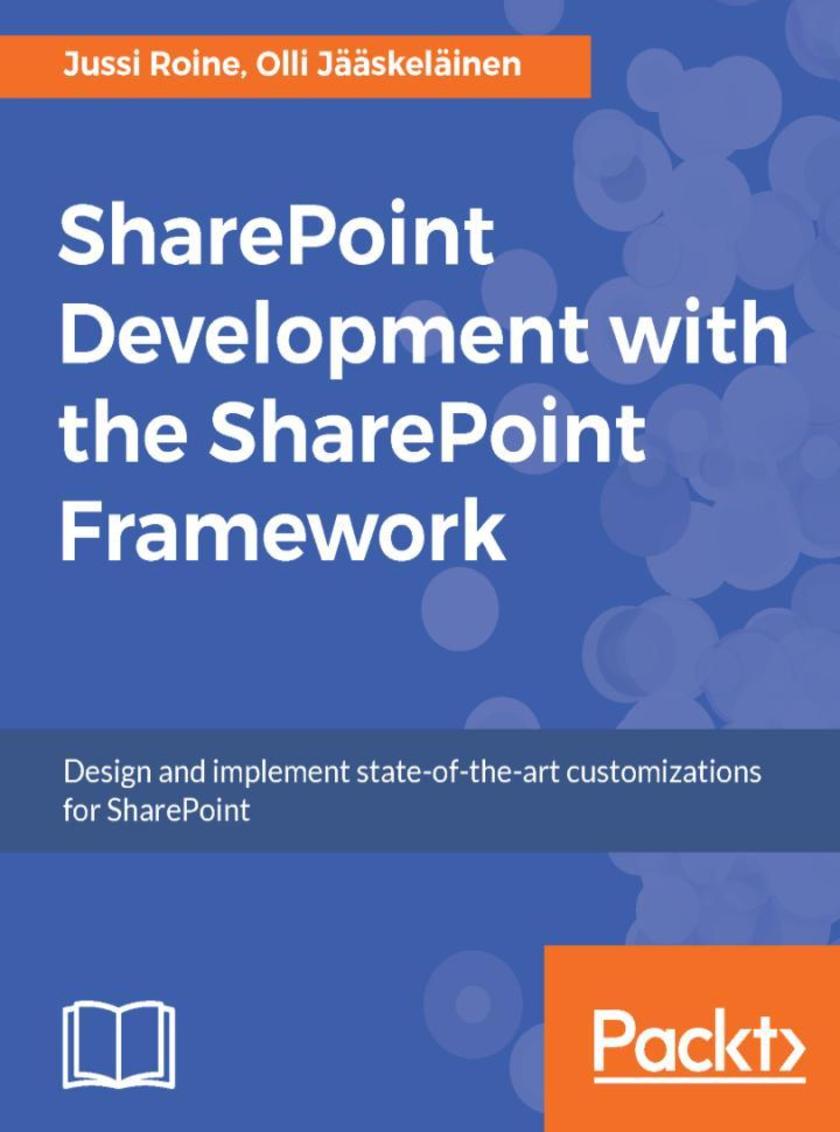
SharePoint Development with the SharePoint Framework
¥80.65
Design and create beautiful solutions using modern development tools for SharePoint Online About This Book ? Get the best out of the latest Sharepoint Framework and leverage the Sharepoint RESTful and JSOM APIs. ? Develop efficient client side applications with JavaScript injection and Sharepoint Addins. ? Get the best tips and tricks on designing your website flawlessly. Who This Book Is For This book targets current SharePoint developers, as well as people starting their journey on SharePoint development. The reader must have basic web development programming knowledge, including JavaScript and CSS. The reader should have familiarity using and managing SharePoint-based collaboration sites. What You Will Learn ? Understand what the SharePoint Framework is ? Create modern solutions using the new tools, approaches and frameworks ? Learn how to use Visual Studio Code for effective SharePoint development ? Package and deploy your code, using automation as needed ? Work with content and data stored in SharePoint ? Benefit from third party frameworks without having to build your own frameworks ? Debug and troubleshoot your code with ease ? Configure security in your application In Detail SharePoint is one of Microsoft's best known web platforms. A loyal audience of developers, IT Pros and power users use it to build line of business solutions. The SharePoint Framework (SPFx) is a great new option for developing SharePoint solutions. Many developers are creating full-trust based solutions or add-in solutions, while also figuring out where and how SPFx fits in the big picture. This book shows you how design, build, deploy and manage SPFx based solutions for SharePoint Online and SharePoint 2016. The book starts by getting you familiar with the basic capabilities of SPFx. After that, we will walk through the tool-chain on how to best create production-ready solutions that can be easily deployed manually or fully automated throughout your target Office 365 tenants. We describe how to configure and use Visual Studio Code, the de facto development environment for SPFx-based solutions. Next, we provide guidance and a solid approach to packaging and deploying your code. We also present a straightforward approach to troubleshooting and debugging your code an environment where business applications run on the client side instead of the server side. Style and approach The approach will be that of a practical tutorial which will take you through every topic using code samples and working examples.
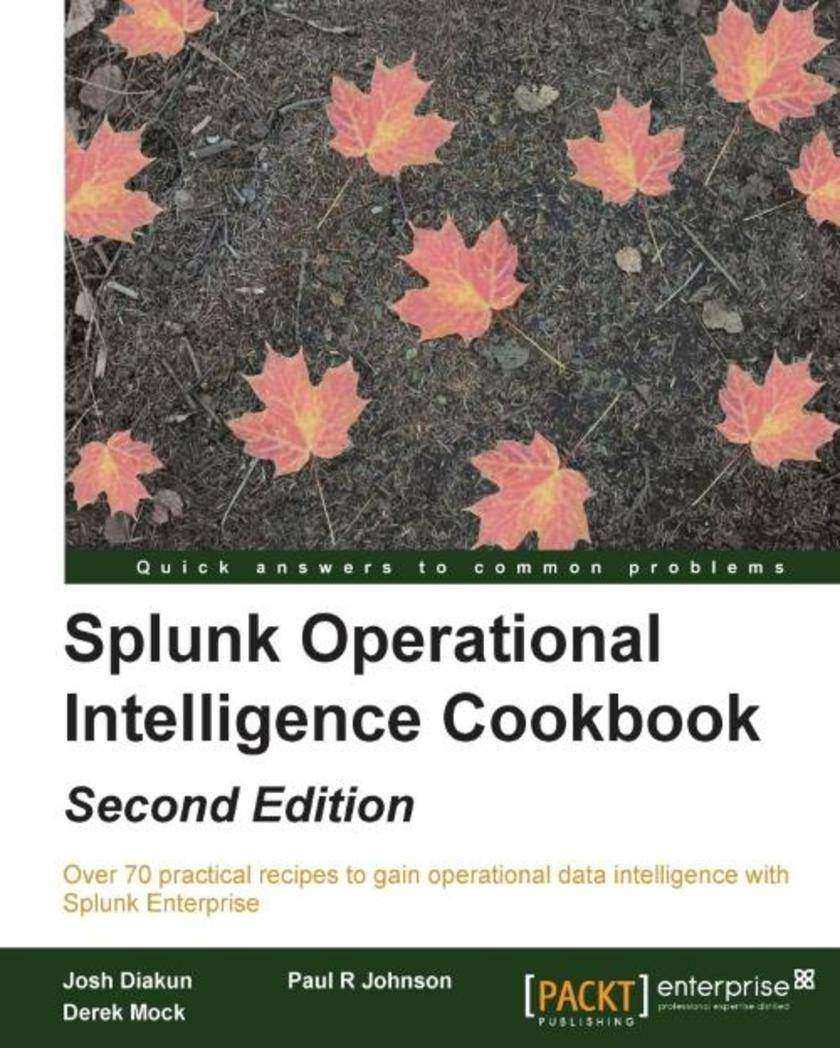
Splunk Operational Intelligence Cookbook - Second Edition
¥99.18
Over 70 practical recipes to gain operational data intelligence with Splunk Enterprise About This Book This is the most up-to-date book on Splunk 6.3 and teaches you how to tackle real-world operational intelligence scenarios efficiently Get business insights using machine data using this easy-to-follow guide Search, monitor, and analyze your operational data skillfully using this recipe-based, practical guide Who This Book Is For This book is intended for users of all levels who are looking to leverage the Splunk Enterprise platform as a valuable operational intelligence tool. The recipes provided in this book will appeal to individuals from all facets of business, IT, security, product, marketing, and many more! Also, existing users of Splunk who want to upgrade and get up and running with Splunk 6.3 will find this book invaluable. What You Will Learn Use Splunk to gather, analyze, and report on data Create dashboards and visualizations that make data meaningful Build an operational intelligence application with extensive features and functionality Enrich operational data with lookups and workflows Model and accelerate data and perform pivot-based reporting Build real-time, *ed, and other intelligence-driven alerts Summarize data for longer term trending, reporting, and analysis Integrate advanced JavaScript charts and leverage Splunk's API In Detail Splunk makes it easy for you to take control of your data, and with Splunk Operational Cookbook, you can be confident that you are taking advantage of the Big Data revolution and driving your business with the cutting edge of operational intelligence and business analytics. With more than 70 recipes that demonstrate all of Splunk’s features, not only will you find quick solutions to common problems, but you’ll also learn a wide range of strategies and uncover new ideas that will make you rethink what operational intelligence means to you and your organization. You’ll discover recipes on data processing, searching and reporting, dashboards, and visualizations to make data shareable, communicable, and most importantly meaningful. You’ll also find step-by-step demonstrations that walk you through building an operational intelligence application containing vital features essential to understanding data and to help you successfully integrate a data-driven way of thinking in your organization. Throughout the book, you’ll dive deeper into Splunk, explore data models and pivots to extend your intelligence capabilities, and perform advanced searching to explore your data in even more sophisticated ways. Splunk is changing the business landscape, so make sure you’re taking advantage of it. Style and approach Splunk is an excellent platform that allows you to make sense of machine data with ease. The adoption of Splunk has been huge and everyone who has gone beyond installing Splunk wants to know how to make most of it. This book will not only teach you how to use Splunk in real-world scenarios to get business insights, but will also get existing Splunk users up to date with the latest Splunk 6.3 release.

Learning JavaScript Data Structures and Algorithms - Second Edition
¥80.65
Hone your skills by learning classic data structures and algorithms in JavaScript About This Book Understand common data structures and the associated algorithms, as well as the context in which they are used. Master existing JavaScript data structures such as array, set and map and learn how to implement new ones such as stacks, linked lists, trees and graphs. All concepts are explained in an easy way, followed by examples. Who This Book Is For If you are a student of Computer Science or are at the start of your technology career and want to explore JavaScript’s optimum ability, this book is for you. You need a basic knowledge of JavaScript and programming logic to start having fun with algorithms. What You Will Learn Declare, initialize, add, and remove items from arrays, stacks, and queues Get the knack of using algorithms such as DFS (Depth-first Search) and BFS (Breadth-First Search) for the most complex data structures Harness the power of creating linked lists, doubly linked lists, and circular linked lists Store unique elements with hash tables, dictionaries, and sets Use binary trees and binary search trees Sort data structures using a range of algorithms such as bubble sort, insertion sort, and quick sort In Detail This book begins by covering basics of the JavaScript language and introducing ECMAScript 7, before gradually moving on to the current implementations of ECMAScript 6. You will gain an in-depth knowledge of how hash tables and set data structure functions, as well as how trees and hash maps can be used to search files in a HD or represent a database. This book is an accessible route deeper into JavaScript. Graphs being one of the most complex data structures you’ll encounter, we’ll also give you a better understanding of why and how graphs are largely used in GPS navigation systems in social networks. Toward the end of the book, you’ll discover how all the theories presented by this book can be applied in real-world solutions while working on your own computer networks and Facebook searches. Style and approach This book gets straight to the point, providing you with examples of how a data structure or algorithm can be used and giving you real-world applications of the algorithm in JavaScript. With real-world use cases associated with each data structure, the book explains which data structure should be used to achieve the desired results in the real world.
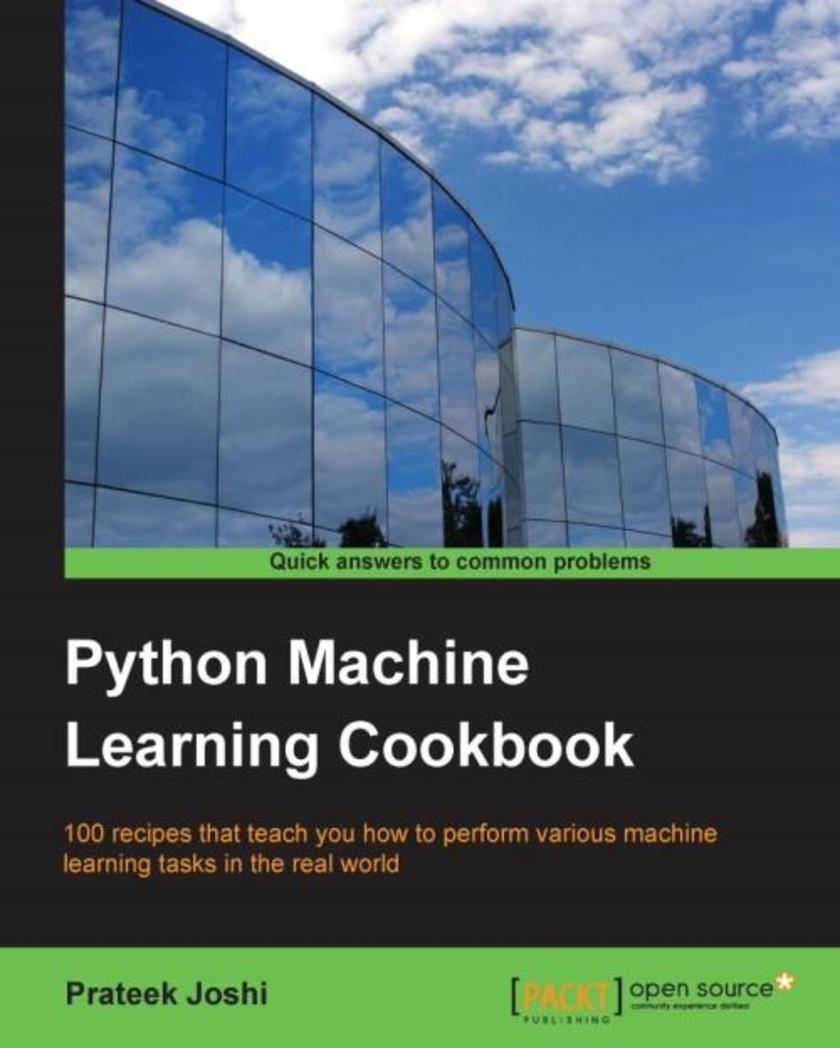
Python Machine Learning Cookbook
¥107.90
100 recipes that teach you how to perform various machine learning tasks in the real world About This Book Understand which algorithms to use in a given context with the help of this exciting recipe-based guide Learn about perceptrons and see how they are used to build neural networks Stuck while making sense of images, text, speech, and real estateThis guide will come to your rescue, showing you how to perform machine learning for each one of these using various techniques Who This Book Is For This book is for Python programmers who are looking to use machine-learning algorithms to create real-world applications. This book is friendly to Python beginners, but familiarity with Python programming would certainly be useful to play around with the code. What You Will Learn Explore classification algorithms and apply them to the income bracket estimation problem Use predictive modeling and apply it to real-world problems Understand how to perform market segmentation using unsupervised learning Explore data visualization techniques to interact with your data in diverse ways Find out how to build a recommendation engine Understand how to interact with text data and build models to analyze it Work with speech data and recognize spoken words using Hidden Markov Models Analyze stock market data using Conditional Random Fields Work with image data and build systems for image recognition and biometric face recognition Grasp how to use deep neural networks to build an optical character recognition system In Detail Machine learning is becoming increasingly pervasive in the modern data-driven world. It is used extensively across many fields such as search engines, robotics, self-driving cars, and more. With this book, you will learn how to perform various machine learning tasks in different environments. We’ll start by exploring a range of real-life scenarios where machine learning can be used, and look at various building blocks. Throughout the book, you’ll use a wide variety of machine learning algorithms to solve real-world problems and use Python to implement these algorithms. You’ll discover how to deal with various types of data and explore the differences between machine learning paradigms such as supervised and unsupervised learning. We also cover a range of regression techniques, classification algorithms, predictive modeling, data visualization techniques, recommendation engines, and more with the help of real-world examples. Style and approach You will explore various real-life scenarios in this book where machine learning can be used, and learn about different building blocks of machine learning using independent recipes in the book.
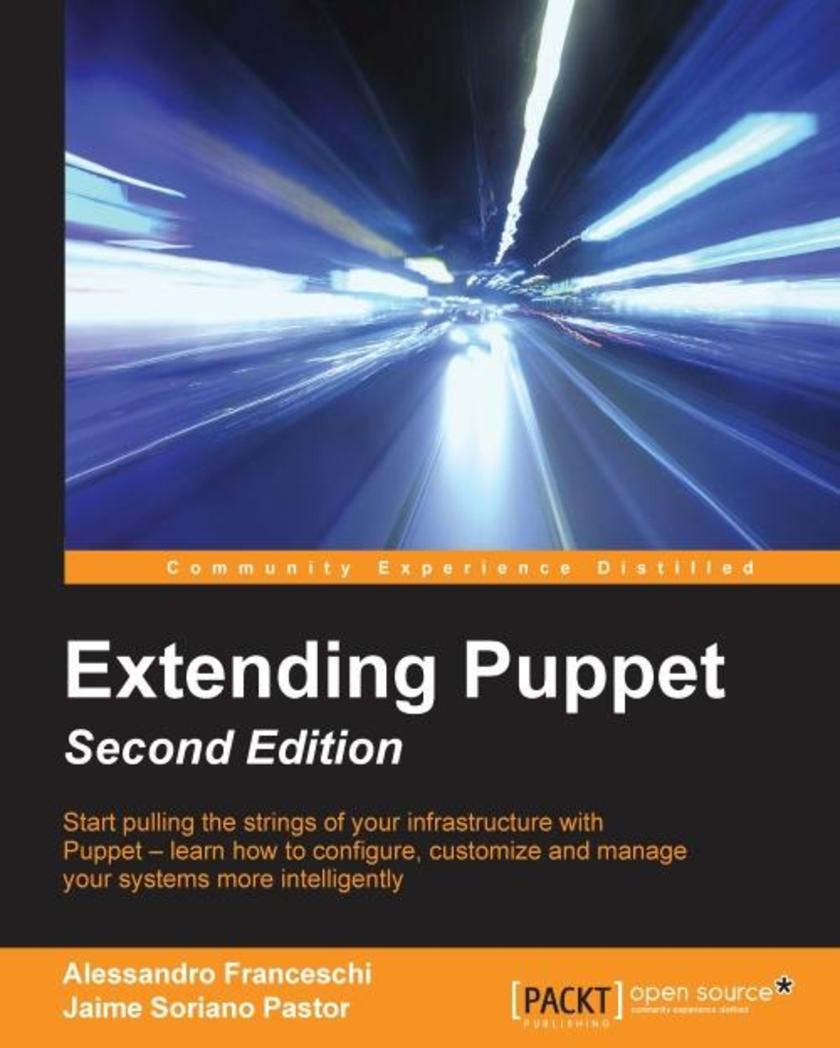
Extending Puppet - Second Edition
¥71.93
Start pulling the strings of your infrastructure with Puppet – learn how to configure, customize, and manage your systems more intelligently About This Book Explore the wider Puppet ecosystem of useful tools Design and manage your Puppet architecture for optimum performance Write more efficient code that keeps your infrastructure more robust Who This Book Is For If you are a Puppet user, this book will help you on different levels. If you a beginner, we summarize the key Puppet components and give you the elements to have a broader vision. For more experienced users, you will be surprised by with topics on designing, implementing, adapting, and deploying Puppet architectures. If you are expert, you will find topics and information that is rarely exposed in other books, giving you an insight into Puppet's future and its usage on alternative devices. What You Will Learn Learn the principles of Puppet language and ecosystem Extract the features of Hiera and PuppetDB’s power usage Explore the different approaches to Puppet architecture design Use Puppet to manage network, cloud, and virtualization devices Manage and test the Puppet code workflow Tweak, hack, and adapt the Puppet extension points Get a run through of the strategies and patterns to introduce Puppet automation Master the art of writing reusable modules In Detail Puppet has changed the way we manage our systems, but Puppet itself is changing and evolving, and so are the ways we are using it. To tackle our IT infrastructure challenges and avoid common errors when designing our architectures, an up-to-date, practical, and focused view of the current and future Puppet evolution is what we need. With Puppet, you define the state of your IT infrastructure, and it automatically enforces the desired state. This book will be your guide to designing and deploying your Puppet architecture. It will help you utilize Puppet to manage your IT infrastructure. Get to grips with Hiera and learn how to install and configure it, before learning best practices for writing reusable and maintainable code. You will also be able to explore the latest features of Puppet 4, before executing, testing, and deploying Puppet across your systems. As you progress, Extending Puppet takes you through higher abstraction modules, along with tips for effective code workflow management. Finally, you will learn how to develop plugins for Puppet - as well as some useful techniques that can help you to avoid common errors and overcome everyday challenges. Style and approach This is a collection of specific information about multiple topics related to Puppet and its ecosystem. Starting from a review of the very basics to more advanced topics, mixing practical advice with important theory and broader perspective, along with implementation details.
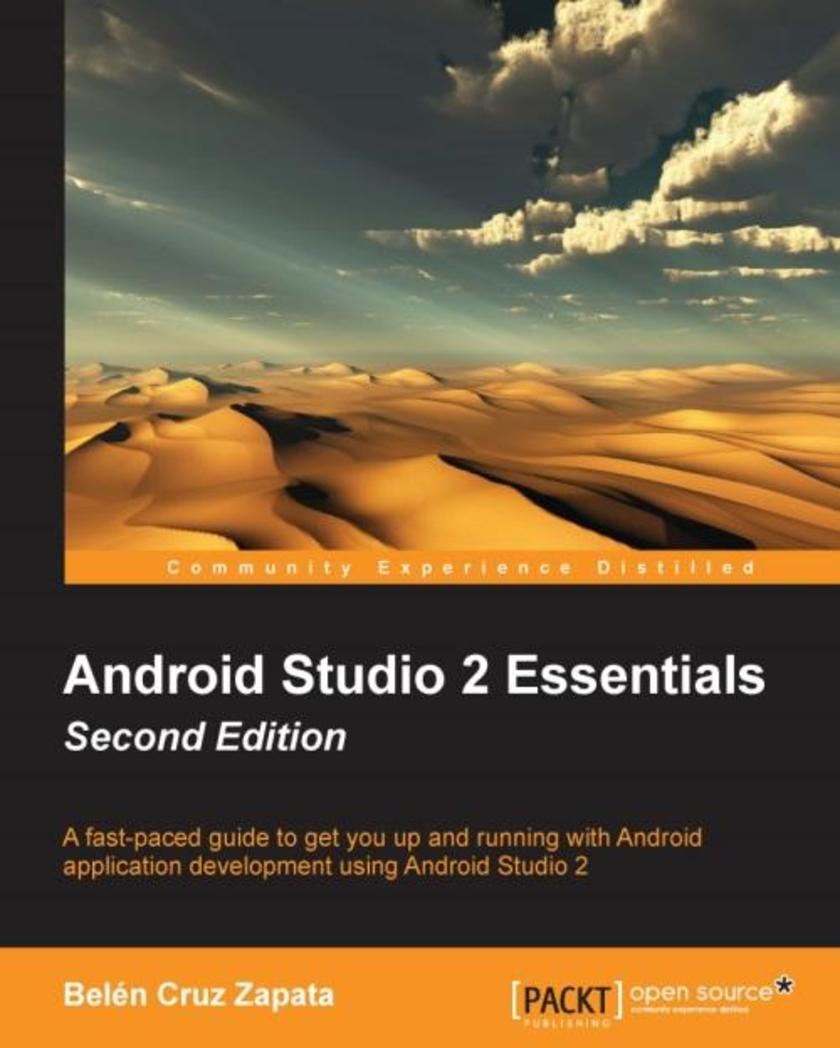
Android Studio 2 Essentials - Second Edition
¥63.21
A fast-paced guide to get you up and running with Android application development using Android Studio 2 About This Book Configure, build, and run Android projects with Android Studio 2 Test your apps using the Android emulator and learn how to manage virtual devices Explore how Android Studio 2 can be made a part of your workflow to reduce the overall development time Who This Book Is For If you are an Android developer looking to quickly take advantage of Android Studio 2 and add it to your workflow, then this book is for you. It is assumed that you are familiar with the OOP paradigm and Java. You are recommended to have prior knowledge of the main characteristics of the Android mobile system to get the most out of this book. What You Will Learn Install Android Studio on your system and configure the Android Software Development Kit Create your first project and explore its structure Manage a project in Android Studio 2 with Gradle Improve your productivity while programming by getting the best of the code editor Design the user interface using layouts and see how to handle various user events Integrate Google Play services into your project efficiently Monitor your app while it's running and constantly improve its performance In Detail Android Studio 2, the official IDE for Android application development, dramatically improves your workflow by letting you quickly see changes running on your device or emulator. It gives developers a unique platform by making app builds and deployment faster. This book will get you up and running with all the essential features of Android Studio 2 to optimize your development workflow. Starting off with the basic installation and configuration of Android Studio 2, this book will help you build a new project by showing you how to create a custom launcher icon and guiding you to choose your project. You will then gain an insight into the additional tools provided in Android Studio, namely the Software Development Kit (SDK) Manager, Android Virtual Device (AVD) Manager, and Javadoc. You’ll also see how to integrate Google Play Services in an Android project. Finally, you’ll become familiar with the Help section in Android Studio, which will enable you to search for support you might require in different scenarios. Style and approach A comprehensive and practical guide that will give you the essential skills required to develop Android applications quickly using Android Studio. With the help of a real-world project, this book will show how to make Android Studio a part of your development process and optimize it.
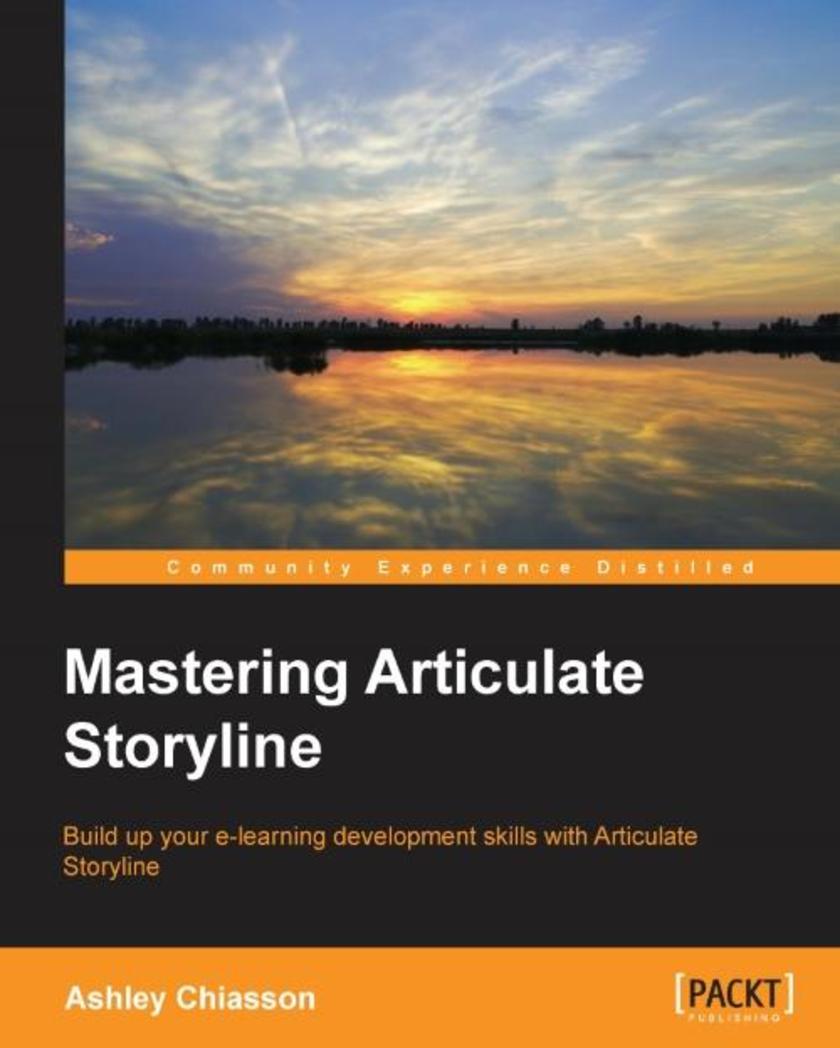
Mastering Articulate Storyline
¥80.65
Build up your e-learning development skills with Articulate Storyline About This Book Develop interactive e-learning projects using advanced techniques Impress your clients and/or audience with out-of-the-box interactions Step-by-step walkthroughs provide practical solutions Who This Book Is For This book is for anyone experienced in using the basic functions of Articulate Storyline who are yearning to learn more. It’s designed to provide a brief overview of key concepts, to help you refresh your knowledge of common functions, and teach you how to push Storyline to the limit! What You Will Learn Familiarize yourself with best practices for e-learning development Review key Storyline concepts before diving in deep with development Discover new ways of working within Storyline to extend slide content and enhance interactivity Personalize your story with advanced variable-based interactions See how JavaScript can be used in your stories to do some really neat things Assess your learners using customized assessment options and find out how to troubleshoot common issues Customize the learning experience by modifying the player properties and publishing settings Customize your story and prepare it for publishing In Detail Storyline is a powerful e-learning authoring tool that allows you to take your creativity to the next level. However, more often than not, projects don't require such complex interactions, leaving Storyline's full capabilities untapped. This book will provide you with the information you need to take your Storyline development up a notch by leveraging the full suite of possibilities Storyline has to offer. You will be provided with a refresher of the key concepts before we take you deep into the exciting world of enhanced interactivity, variables, and even some JavaScript—oh my! With downloadable activities, you can either follow along and compare your output, use the activities as they are, modify the activities to suit your own needs, or reverse-engineer the activities to better understand how they were developed. Style and approach You’ll get hands-on working with project files that were created with you in mind. As you move through each chapters, the practical, step-by-step approach will get you using some of the more advanced features of Storyline to create polished and snazzy interactions.
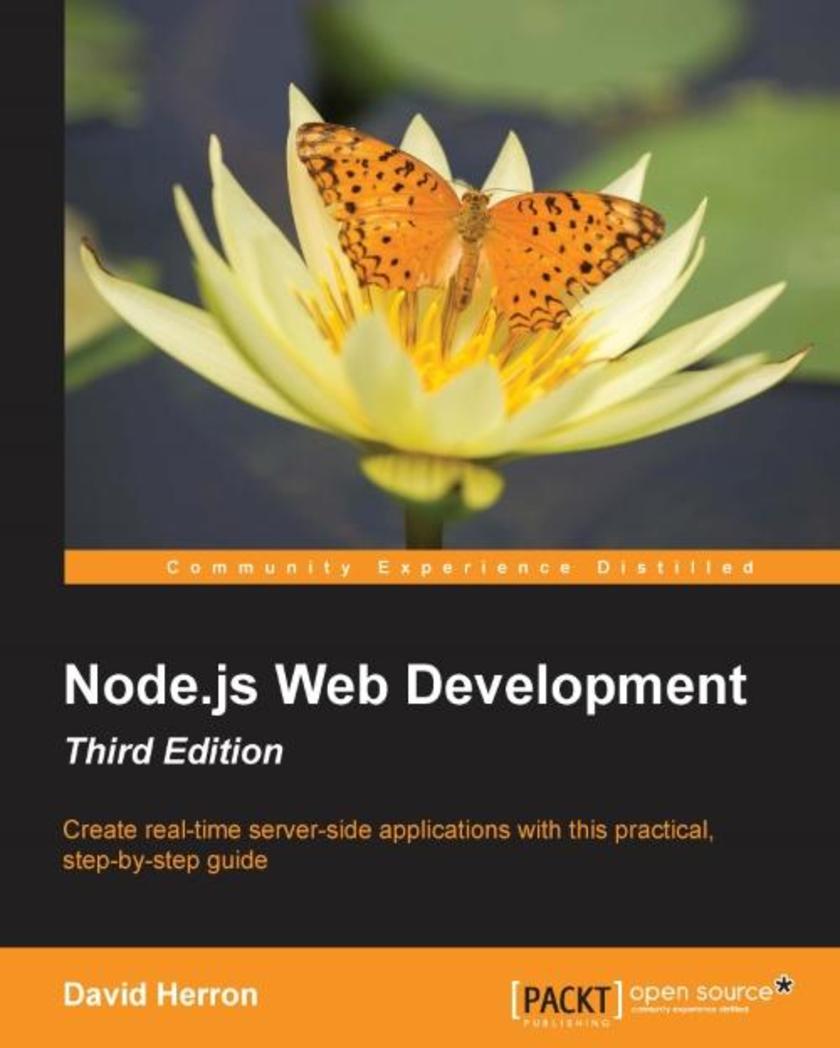
Node.js Web Development - Third Edition
¥80.65
Create real-time server-side applications with this practical, step-by-step guide About This Book Learn about server-side JavaScript with Node.js and Node modules through the most up-to-date book on Node.js web development Understand website development both with and without the Connect/Express web application framework Develop both HTTP server and client applications Who This Book Is For This book is for anybody looking for an alternative to the "P" languages (Perl, PHP, and Python), or anyone looking for a new paradigm of server-side application development. You should have at least a rudimentary understanding of JavaScript and web application development. What You Will Learn Install and use Node.js for both development and deployment Use the Express application framework Configure Bootstrap for mobile-first theming Use data storage engines such as MySQL, SQLITE3, and MongoDB Understand user authentication methods, including OAuth, with third-party services Deploy Node.js to live servers, including microservice development with Docker Perform unit testing with Mocha Perform functional testing of the web application with CasperJS In Detail Node.js is a server-side JavaScript platform using an event driven, non-blocking I/O model allowing users to build fast and scalable data-intensive applications running in real time. Node.js Web Development shows JavaScript is not just for browser-side applications. It can be used for server-side web application development, real-time applications, microservices, and much more. This book gives you an excellent starting point, bringing you straight to the heart of developing web applications with Node.js. You will progress from a rudimentary knowledge of JavaScript and server-side development to being able to create and maintain your own Node.js application. With this book you'll learn how to use the HTTP Server and Client objects, data storage with both SQL and MongoDB databases, real-time applications with Socket.IO, mobile-first theming with Bootstrap, microservice deployment with Docker, authenticating against third-party services using OAuth, and much more. Style and Approach This book is a practical guide for anyone looking to develop striking and robust web applications using Node.js.




 购物车
购物车 个人中心
个人中心



